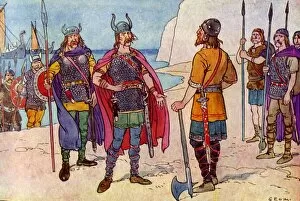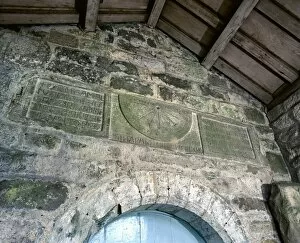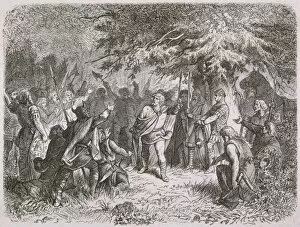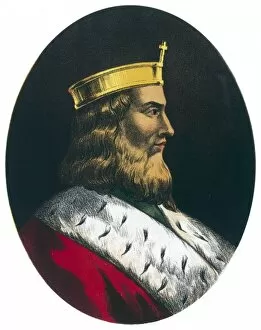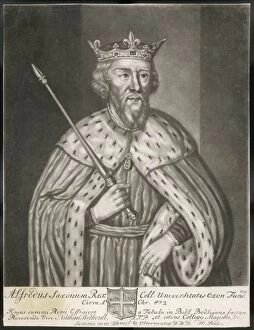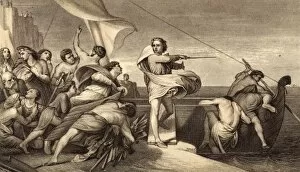Saxons Collection (#5)
The Saxons, a resilient and influential group of people, played a significant role in shaping the history of Britain
For sale as Licensed Images
Choose your image, Select your licence and Download the media
The Saxons, a resilient and influential group of people, played a significant role in shaping the history of Britain. The Bayeux Tapestry, an iconic artifact portraying the Norman Conquest, vividly depicts their encounters with other civilizations. In scenes like the Battle of Hastings, this masterpiece showcases their bravery and determination. Dating back to 597 AD, when Pope Gregory I sent missionaries to convert Anglo-Saxon England to Christianity, the Saxons witnessed great transformations within their society. A map from that era reveals how they inhabited different regions across Britain. One notable Saxon figure was King Alfred the Great who ruled over the West Saxons during turbulent times. His commitment to education is exemplified by depictions of him reading intently in historical artwork. Alfred's reign marked a turning point for his people as he successfully defended against Viking invasions and fostered cultural advancements. They were not only warriors but also had a rich social life. Paintings such as "Saxon Ladies" by Strutt portray elegant women dressed in elaborate garments while "Anglo-Saxon Men Pl. XIX" captures their masculine strength and attire. Another prominent Saxon king was Egbert who reigned over Wessex from 802 until 839 AD. Known for his political prowess and leadership skills, King Egbert left an indelible mark on Saxon history. Even though they faced challenges throughout their existence, including conflicts with Vikings like Canute depicted in engravings by G. Noble or battles like those shown at Hastings on the Bayeux Tapestry; it is undeniable that they have left an enduring legacy on British culture and heritage. Whether through art or historical accounts, we can appreciate how these remarkable individuals shaped Britain's past. From kings like Alfred the Great and Egbert to ordinary men and women captured in paintings or tapestries; each contributed to building a vibrant civilization that continues to influence us today.


